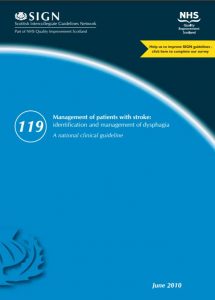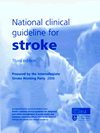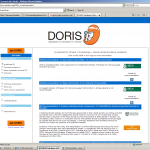Stroke Guidelines in the UK. These are updated and may change.
The Scottish Intercollegiate Guidelines Network (SIGN) develops evidence based clinical practice guidelines for the National Health Service (NHS) in Scotland.
- SIGN 119 – Dysphagia

- SIGN 149- Risk estimation and the prevention of cardiovascular disease
- SIGN 152 – Cardiac arrhythmias in coronary heart disease

The NICE (National Institute for Health and Clinical Excellence) also produce guidelines relevant to the whole of the UK. Those relevant to stroke are:

The Royal College of Physicians Intercollegiate Stroke Working Party also produce national clinical guidelines for stroke.







